utilitiesCommunication
Type of resources
Available actions
Topics
Keywords
Contact for the resource
Provided by
Years
Formats
Representation types
Scale 1:
Resolution
-
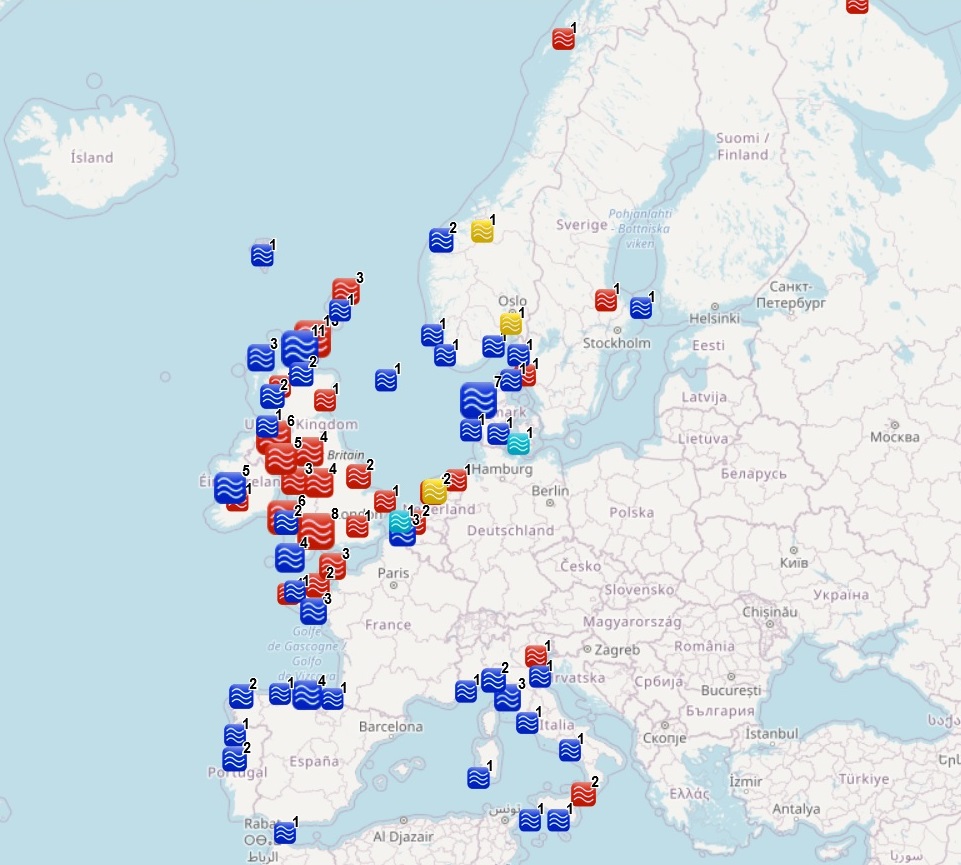
The dataset on ocean energy in the European seas was created in 2014 by AZTI for the European Marine Observation and Data Network (EMODnet). It is the result of the aggregation and harmonization of datasets provided by several sources from all across the European countries. It is updated every year, and is available for viewing and download on EMODnet web portal (Human Activities, https://emodnet.ec.europa.eu/en/human-activities). The dataset contains points representing Ocean Energy project sites in the following countries: Belgium, Denmark, Finland, France, Ireland, Italy, Norway, Portugal, Russia, Spain, Sweden, The Netherlands and United Kingdom. Where available, each point has the following attributes: site code (ID_1), project code (ID), name, location, country, sea basin, sea, distance to coast (metres), resource type (wave, tidal, salinity gradient, wave/wind), starting year, ending year, lease status, technology (Based on www.aquaret.com/), device, device scale (Full scale, prototype, etc.), project scale (Commercial, Demonstrator Array, etc.), project status (operational, completed, etc.), project capacity (KW), promoter, position info (it indicates if the attribute value is original from the source or has been estimated or calculated the polygon centroid) and the studies conducted for the environmental assessment (EIA). In 2016, a feature on areas for ocean energy test sites was included. It contains polygons representing Ocean Energy test sites in the following countries: Denmark, France, Ireland, Norway, Portugal, Spain, Sweden, The Netherlands and United Kingdom. Where available, each polygon has the following attributes: test site code, name, location, country, sea basin, sea, distance to coast (metres), resource type (wave, tidal), starting year, ending year, lease status, site status, capacity (kW), depth (metres), area (square km), grid connection, number of berths, developer, position info (it indicates if the attribute value is original from the source or has been estimated) and the studies conducted for the Environmental Assessment (EIA). In 2024, new data has been included and existing data has been updated.
-

The dataset on coastal discharge points from Urban Waste Water Treatment Plant (UWWTP) was created in 2019 by AZTI for the European Marine Observation and Data Network (EMODnet). It is based on the dataset "Waterbase-UWWTD" (Urban Waste Water Treatment Directive – reported data) provided by the European Topic Centre on Inland, Coastal and Marine waters, and made available at https://www.eea.europa.eu/data-and-maps/data/waterbase-uwwtd-urban-waste-water-treatment-directive-8. The dataset is available for viewing and download on EMODnet web portal (Human Activities, https://emodnet.ec.europa.eu/en/human-activities) and it presents the available information (location of discharge points, link to specific treatment plant, type of receiving area into which the effluent/wastewater is discharged, related waterbody/river basin) on individual points of discharge from treatment plants or collecting systems located in coastal NUTS3 regions, based on data selected from the reporting of Member States as part of the UWWTD implementation. The geographic coverage is: Belgium, Bulgaria, Croatia, Cyprus, Denmark, Estonia, Finland, France, Germany, Greece, Iceland, Ireland, Italy, Latvia, Lithuania, Malta, Netherlands, Norway, Poland, Portugal, Romania, Slovenia, Spain, Sweden, United Kingdom. The description of all attribute fields of UWWTP is given in the Waterbase-UWWTD (https://www.eea.europa.eu/data-and-maps/data/waterbase-uwwtd-urban-waste-water-treatment-directive-8/waterbase-uwwtd). In this update, data provided by several countries during 2022 (Waterbase reported under UWWTD data call 2021; version 10 publised 15 January 2023) are included.
-
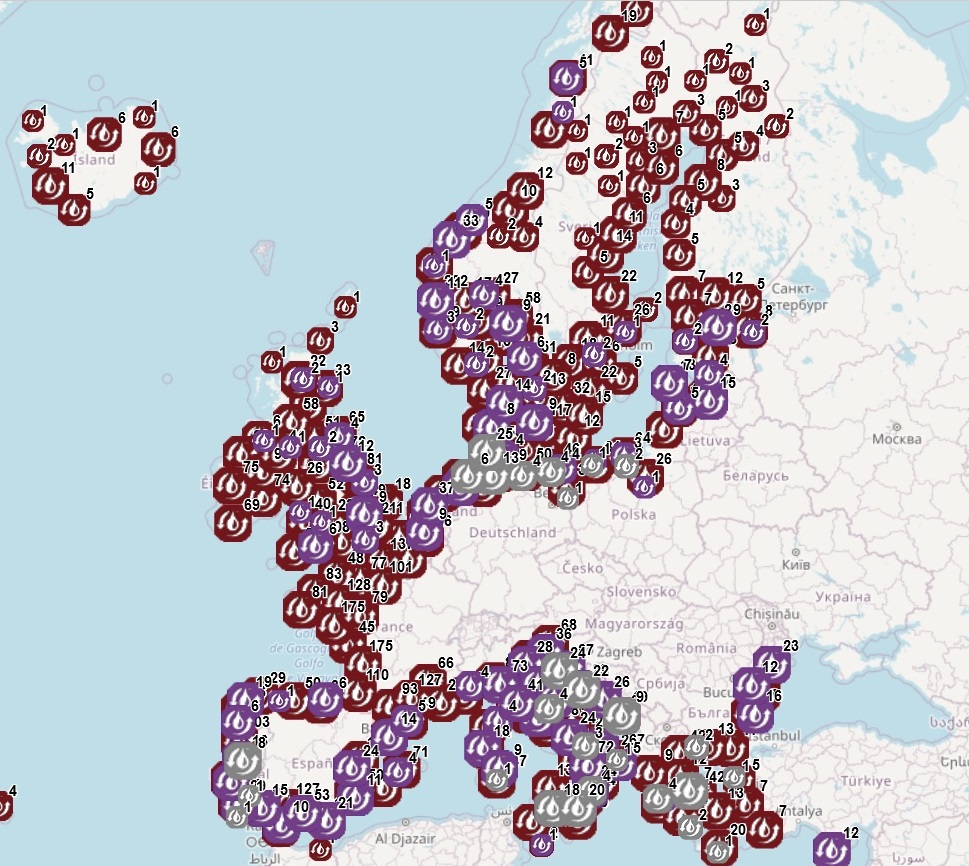
The datset on coastal Urban Waste Water Treatment Plant (UWWTP) was created in 2019 by AZTI for the European Marine Observation and Data Network (EMODnet). It is based on the dataset "Waterbase-UWWTD" (Urban Waste Water Treatment Directive – reported data) provided by the European Topic Centre on Inland, Coastal and Marine waters, and made available at https://www.eea.europa.eu/en/datahub/datahubitem-view/6244937d-1c2c-47f5-bdf1-33ca01ff1715. The datset is available for viewing and download on EMODnet - Human Activities web portal (https://emodnet.ec.europa.eu/en/human-activities). Based on data selected from the reporting of Member States as part of the UWWTD implementation, the dataset presents the available information (location, capacity and actual load treated, type of treatment, aggregated data on the performance of plants) on individual UWWTP, and collecting systems without UWWTP, located in NUTS3 regions bordering transitional, coastal and marine waters. The geographic coverage is: Belgium, Bulgaria, Croatia, Cyprus, Denmark, Estonia, Finland, France, Germany, Greece, Iceland, Ireland, Italy, Latvia, Lithuania, Malta, Netherlands, Norway, Poland, Portugal, Romania, Slovenia, Spain, Sweden, United Kingdom. The description of all attribute fields of UWWTP is given in the Waterbase-UWWTD (https://www.eea.europa.eu/en/datahub/datahubitem-view/6244937d-1c2c-47f5-bdf1-33ca01ff1715). In this update, data provided by several countries during 2022 (Waterbase reported under UWWTD data call 2021; version 10 publised 15 January 2023) are included.
-
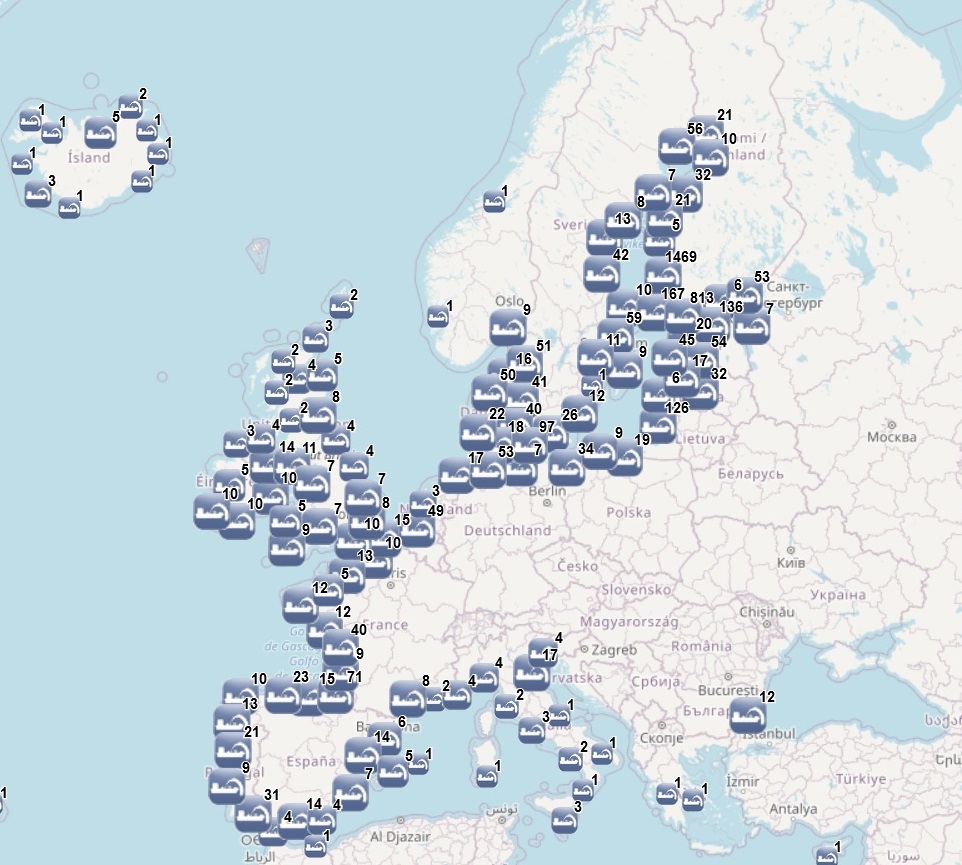
The dataset on dredging in the European seas was created in 2014 by AZTI for the European Marine Observation and Data Network (EMODnet) and it is the result of the aggregation and harmonization of data provided by several sources from all across the Europe. It is available for viewing and download on EMODnet web portal (Human Activities, https://emodnet.ec.europa.eu/en/human-activities). The dataset contains points representing dredging sites in the following countries: Belgium, Bulgaria, Cyprus, Denmark, Estonia, Finland, France, Germany, Greece, Iceland, Ireland, Italy, Latvia, Lithuania, Malta, Norway, Poland, Portugal, Spain, Sweden, The Netherlands and United Kingdom. Where available, each point has the following attributes: Id (Identifier), Position Information (e.g.: Estimated, Original, Polygon centroid of dredging area, Polygon centroid of dredging polygon), Country, Sea basin, Sea, Extraction Area, Year (when data is for a time period, the first year of the period is indicated), Permitted Amount (m3), Permitted Amount (t), Extracted Amount (m3), Extracted Amount (t), Extraction Type (e.g.: Harbour dredging, Estuary dredging, Sea lane), Purpose (e.g.: Maintenance dredging, Capital dredging, Others), End Use (e.g.: Beach nourishment, Commercialization, Confined deposit, Construction material, Embankment, Filling material, Land deposit, Reuse, Sea disposal, Wetland restoration), Material type (e.g.: silt, sand, gravel), Notes, Link to Web Sources. In the 2024 update, extraction data until 2023 has been included.
-
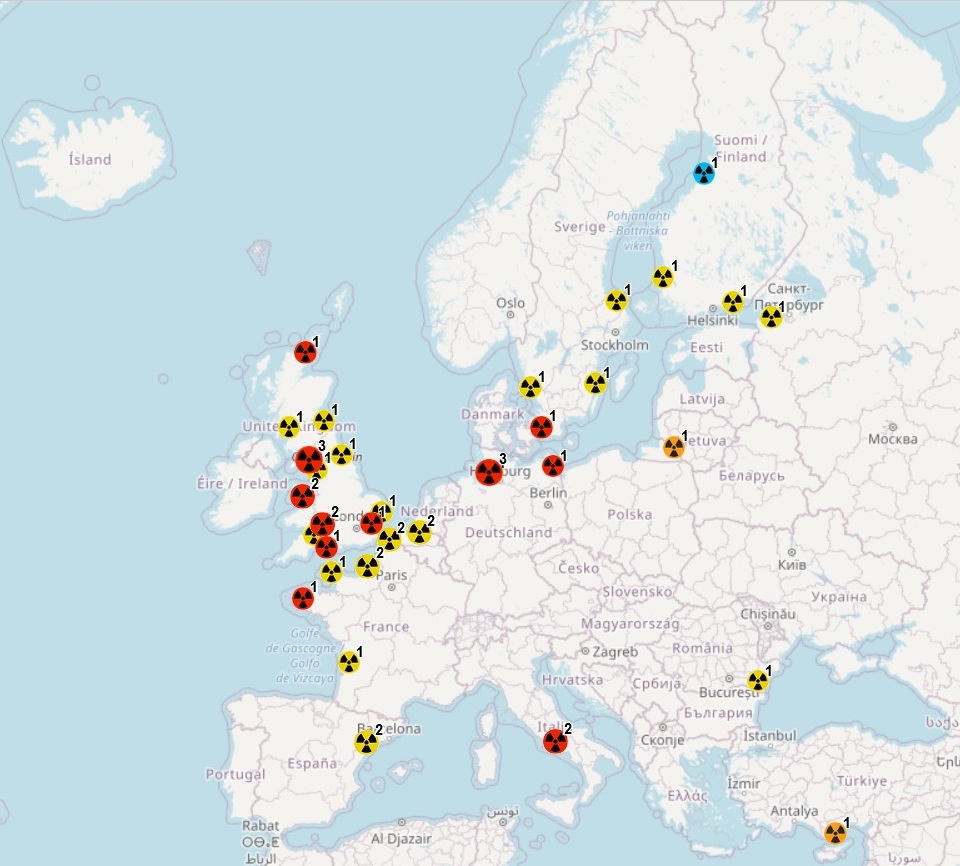
The geodatabase on coastal Nuclear Power Plants was created in 2019 by Cogea for the European Marine Observation and Data Network (EMODnet). It is the result of the aggregation and harmonization of datasets provided by several EU and non-EU sources. It is available for viewing and download on the EMODnet Human Activities web portal (https://emodnet.ec.europa.eu/en/human-activities). The geodatabase contains points representing nuclear power plants sites in the following countries: Belgium, Finland, France, Germany, Italy, Netherlands, Romania, Russia, Spain, Sweden, Turkey and UK. Where available each point has the following attributes: EMODnet Code, Plant Name, Country, Status (Operational, Permanently shut down, Planned, Under construction), Number of Reactors, Thermal Capacity (MW), Gross Capacity (MW), Net Capacity (MW), Location (Municipality), Water Source, Latitude, Longitude. Additional informations about reactors are stored in a separated table and are related to the point feature class. Where available for each reactor the following attributes are reported: EMODnet Code, Plant Name, Status (Operational, Permanently shut down, Planned, Under construction), Type, Model, Fuel Type, Thermal Capacity (MW), Gross Capacity (MW), Net Capacity (MW), Operator, Nuclear Steam Supply System (NSSS), Construction Year, Construction Month, Criticality Year, Criticality Month, Connection to the Grid Year, Connection to the Grid Month, Shut Down Year, Shut Down Month. The dataset will be updated every year.
-
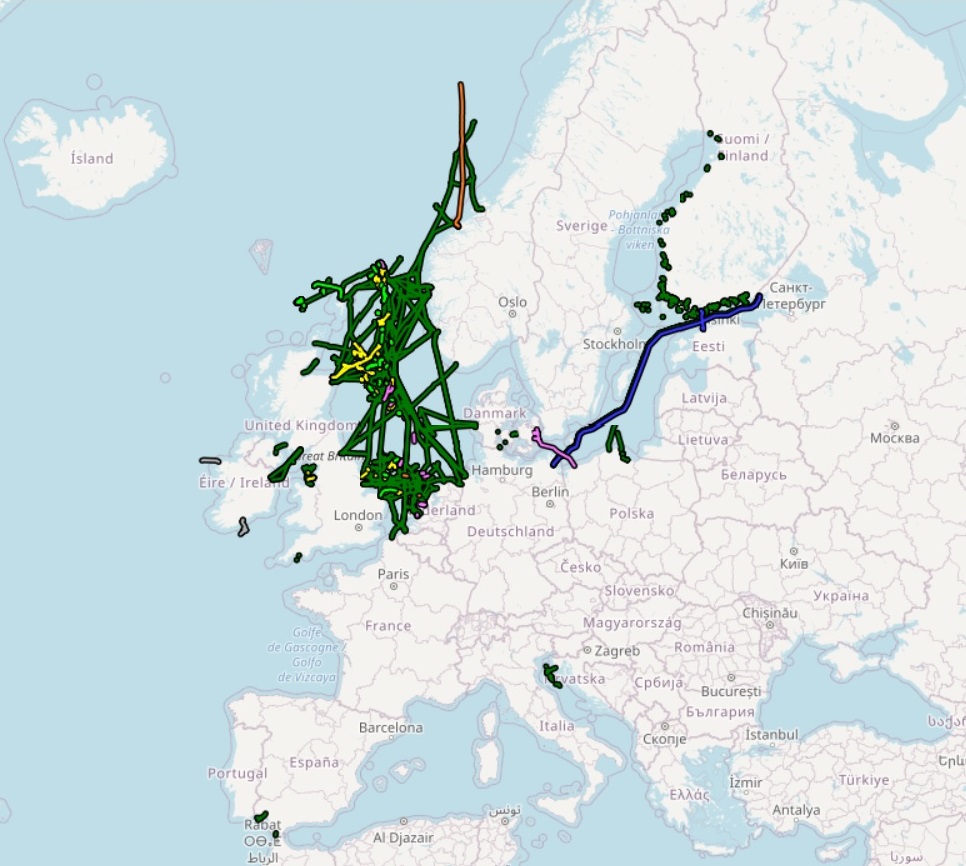
The dataset on offshore pipelines in the European waters was created in 2017 by Cogea for the European Marine Observation and Data Network (EMODnet). It is the result of the aggregation and harmonization of datasets provided by several several EU and non-EU sources. It is updated every year, and is available for viewing and download on the EMODnet web portal (Human Activities, https://emodnet.ec.europa.eu/en/human-activities). The dataset contains lines representing the actual routes of offshore pipelines (where available) in the following countries: Croatia, Denmark, Estonia, Finland, Germany, Ireland, Netherlands, Norway, Poland, Russia, Spain (Andalucía), Sweden and United Kingdom. Each line has the following harmonized attributes (where available): code, name, status (abandoned, active, application submitted, not in use, planned, pre-commissioning, proposed, under construction), medium (air, chemical glycol, chemical methanol, chemical n/a, condensate, control, cooling water, gas, geothermal heating, hydraulic, mixed hydrocarbons, oil, other fluid, sewage, water), operator, size (inches), length (metres), year, from and to locality or facility, country code, country name and notes. Compared with the previous version, this new version includes updated data from German BSH-CONTIS source.
-
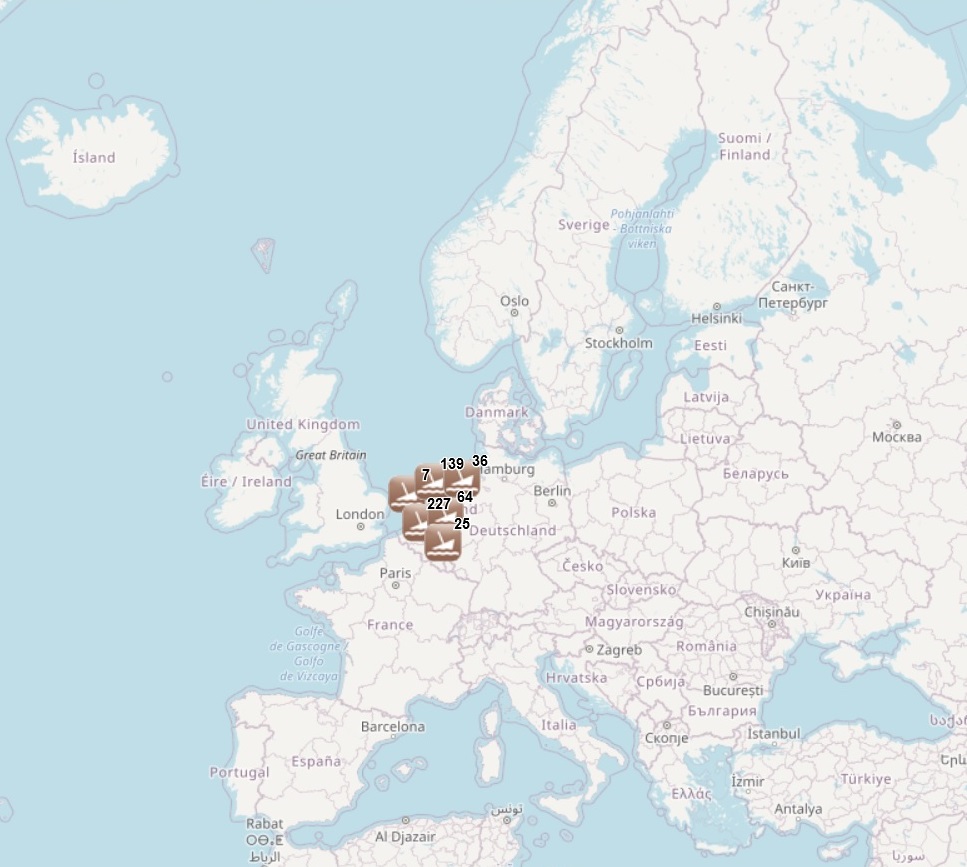
The dataset has been developped under the MACHU EU project, involving seven EU MS (BE, DE, NL, PL, PT, UK, SE). The MACHU GIS database provides information about wrecks, sites and objects underwater. MACHU is an applications on Underwater Cultural Heritage providing historic and archaeological information. MACHU is not intended to give exact positions of wrecks an site, in the aim of ensuring their protection.
-
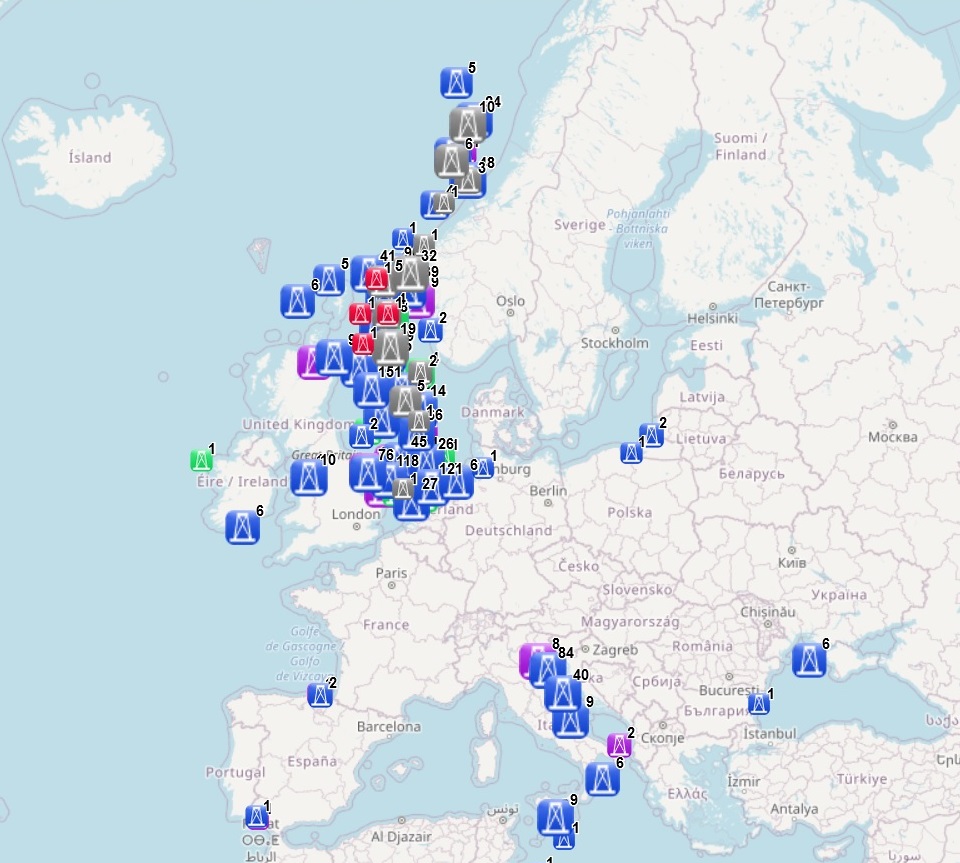
The dataset on offshore installations for Oil and Gas exploitation and exploration activities in the European seas was created in 2015 by Cogea for the European Marine Observation and Data Network (EMODnet). It is the result of the aggregation and harmonization of datasets provided by several EU and non-EU sources. It is updated every year and it is available for viewing and download on EMODnet web portal (Human Activities, https://emodnet.ec.europa.eu/en/human-activities). The dataset contains points representing offshore installations and where available each point has the following attributes: ID, name, country, location block, operator, production start year, primary production, current status, category and function of the installation, sub-structure and topside weights (tonnes), water depth (metres), distance to coast (metres) and notes. The OSPAR commission source covers data for Germany, Ireland, Spain (Atlantic Sea), while for Italy data have been collected and harmonized from the Italian Ministry of Economic Development, for Denmark from the Danish Energy Agency, for the Netherlands from the TNO - Geological Survey of the Netherlands, for Croatia from the Croatian Hydrocarbon Agency, for Norway from the Norwegian Petroleum Directorate, for the UK from the Oil and Gas Authority (surface infrastructures), for Polish and Russian installations in the Baltic Sea from Marine Traffic and Helcom, finally from Marine Traffic come the data for Bulgarian, Russian and Ukrainian installations in the Black Sea and for Spanish installations in the Mediterranean Sea.
-
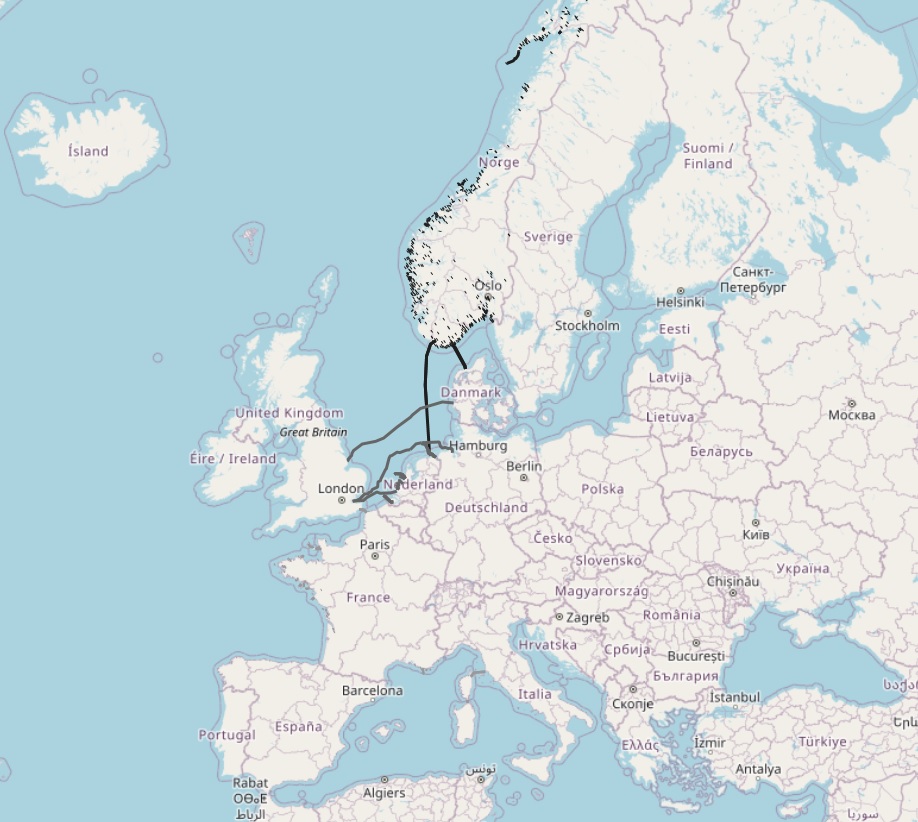
The dataset on subsea power cables in the European waters was created in 2014 by Cogea for the European Marine Observation and Data Network (EMODnet). It is the result of the aggregation of datasets provided by several EU and non-EU sources. It is updated every year, and is available for viewing and download on the EMODnet web portal (Human Activities, https://emodnet.ec.europa.eu/en/human-activities). The dataset contain lines representing actual cable routes locations. Compared with the previous version, this version now includes the German high voltage cables.
-
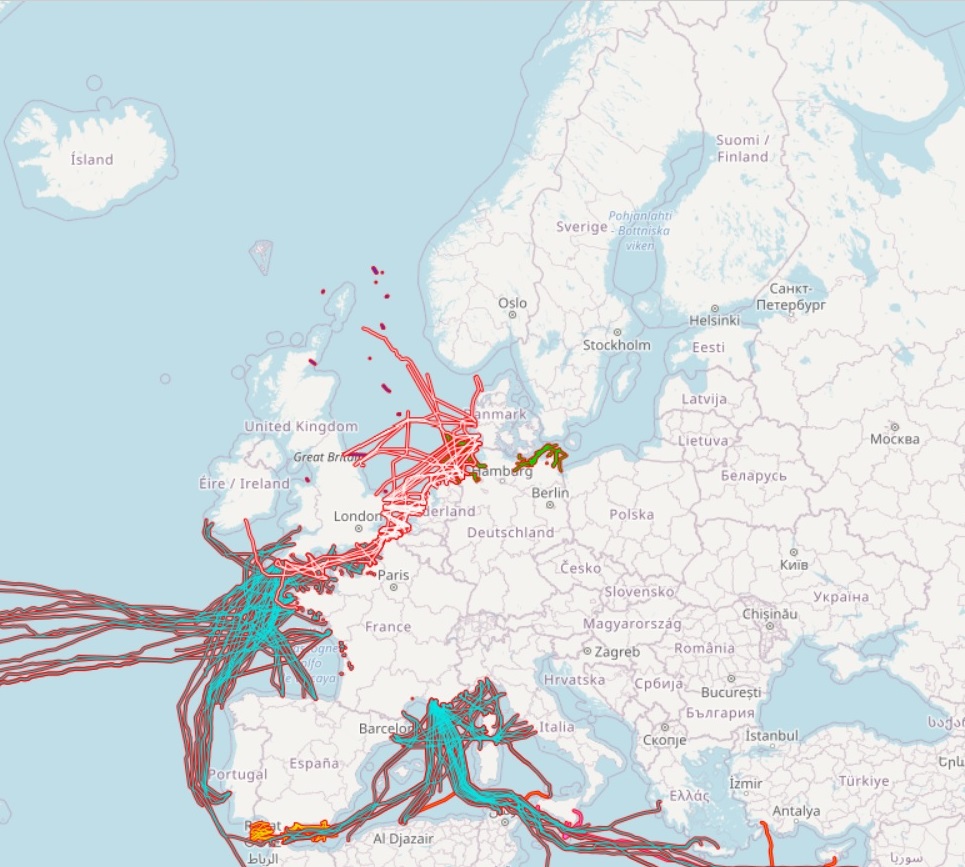
The dataset on subsea telecommunication cables in the European waters was created in 2014 by Cogea for the European Marine Observation and Data Network (EMODnet). It is the result of the aggregation of datasets provided by several EU and non-EU sources. It is updated every year, and is available for viewing and download on the EMODnet web portal (Human Activities, https://emodnet.ec.europa.eu/en/human-activities). The dataset contain lines representing actual cable routes locations. Compared with the previous version, this version includes an update of the German cables.
 EMODnet Product Catalogue
EMODnet Product Catalogue